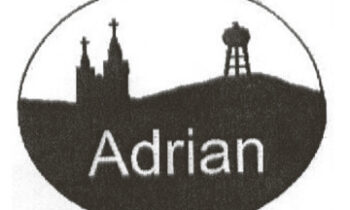By Cindy Wolf,
Adrian EMT
After dedicating a large portion of my life to Emergency Services and CPR Instruction, I felt the need to help the community by applying for grants to supply the churches with Automatic External Defibrillators. In July of this year I completed four applications for grants. I am grateful that we have received funding from Sanford Health, Worthington Regional Healthcare Foundation, and the Arnold Memorial Healthcare Foundation. With the generous funding from these organizations I am able to purchase defibrillators for St. Adrian Catholic Church, in Adrian; St. Anthony, in Lismore; Our Lady of Good Counsel in Wilmont; the United Methodist Church in Adrian; and the Adrian American Legion. Zion Lutheran Church and First Baptist Church have declined at this time. Sudden cardiac arrest is a leading cause of death in the United States. An estimated 890 deaths from sudden cardiac arrest occur outside of the emergency room or hospital each day. An AED is a computerized medical device that analyzes a person’s heart rhythm, determines whether a shock is needed, and delivers a defibrillating shock if necessary. Owing to advances in technology, AEDs have become widely available and are safer, lighter, more portable, and easier to use than ever before. The prices of AEDs have also dropped significantly over the years. In the past, an AED could cost as much as $10,000, now you can get an AED for around $1500 to $2000.
Most cardiac arrests are caused by ventricular fibrillation, an abnormal heart rhythm in which the heart flutters or quivers instead of pumping. The only recognized treatment for sudden cardiac arrest is early defibrillation, which shocks the heart back into a normal rhythm so that it can pump blood. The heart will not permit adequate circulation after sudden cardiac arrest, even if CPR is performed. Using an AED immediately after sudden cardiac arrest can increase the chance of survival by more than 90%. The survival rate is reduced approximately 10% for each minute defibrillation is delayed. In a sudden cardiac arrest emergency, time is of the essence. It takes an average of 8-12 minutes for first responders to arrive at the scene after 911 is called, which is why having an AED available immediately can be the difference between life and death.
It is with a sincere heart that I thank these organizations for their willingness to help save lives. On behalf of all of us living in these communities, Thank you!






